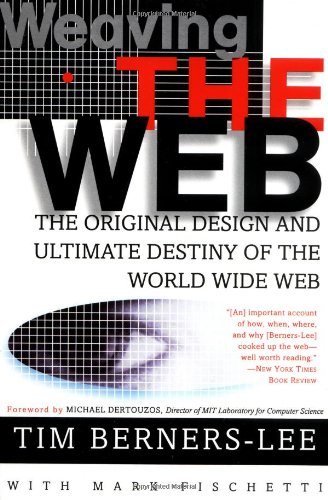Weaving the Web: The Original Design and Ultimate Destiny of the World Wide Web by Tim Berners-Lee

 Download eBook
Download eBook
Weaving the Web: The Original Design and Ultimate Destiny of the World Wide Web Tim Berners-Lee ebook
Publisher: Harper Paperbacks
Format: djvu
ISBN: 0062515861, 9780062515872
Page: 239
�The Semantic Web is a cross-domain network of data, services and applications built upon the World Wide Web in a particular manner, such that the data, services and applications can be easily interconnected in novel ways (like a big, “ constantly updated” Weaving the Web: The Original Design and Ultimate Destiny of the World Wide Web . Weaving the Web: The Original Design and Ultimate Destiny of the World Wide Web by Its Inventor. Harper Collins: New York p, 123. (2000) Weaving the Web: The Original Design and Ultimate Destiny of the World Wide Web. New York: HarperBusiness, 2000. (2000) Weaving The Web: The Original Design and Ultimate Destiny of the World Wide Web by Its Inventor 1st edition. San Francisco: HarperSan Francisco, 1999. Weaving the Web: the Original Design and Ultimate Destiny of The World Wide Web. Humanities in the 21st Century As everyone knows, Tim Berners-Lee invented the WWW. Wetton quit soon afterwards in the middle of a world tour, and not coincidentally the two singles ("Don't Cry"; "The Smile Has Left Your Eyes") were the group's last to hit the Top 40. (1998) Where Wizards Stay Up Late: The Origins of the Internet. Baker's major-label debut is a relentless onslaught of romantic tripe ("You Bring Me Joy") sung with fair technique but no heart, with predictable melodies seemingly designed to be unobtrusive - in fact, the simple, cautiously produced grooves could . [2] www faq's: “How many web sites are there? But what you may not know, is that the original software program that he tinkered with and that ultimately gave rise to the Web was called Enquire, short for Enquire Within Upon Everything. This vision, which would be the basis for what he later would name “The World Wide Web,” was that of Tim Berners-Lee – a young, British, Oxford-educated physicist. Pecknold soon discovered that the weavers had little or no access to computers and the Internet. Recently, they have begun using design techniques to tackle more complex problems, such as finding ways to provide low-cost healthcare throughout the world. There's a user-friendly, semi-official fan-run web site. Just fourteen years later, by 1994, an approximation of his initial vision – though not all .. Rather than ask them to maintain a Web site, she reframed the brief, broadening it to ask what services could be provided to the community to help them improve their livelihoods.

